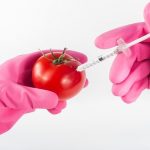Beauveria bassiana is a naturally occurring entomopathogenic fungus, meaning it parasitizes and kills insects. Widely studied and utilized in agricultural pest control, B. bassiana has proven effective in managing a wide variety of insect pests, including those that damage crops and transmit diseases. Due to its ability to naturally control insect populations, B. bassiana is considered a valuable tool in integrated pest management (IPM) and organic farming systems.
Characteristics of Beauveria bassiana
- Taxonomy: Beauveria bassiana belongs to the Cordycipitaceae family and is commonly found in soils worldwide.
- Morphology: The fungus appears as white, powdery mycelium that forms clusters of conidia (spores) on infected insects and surfaces.
- Mode of Action: It infects insects by penetrating their cuticle (exoskeleton) and releasing toxins that eventually kill the host. The fungus then grows out of the dead insect, producing new spores that infect other insects.
- Host Range: B. bassiana has a broad host range, infecting hundreds of insect species, including aphids, whiteflies, thrips, and certain beetles. However, it tends to selectively infect arthropods without affecting humans, animals, or plants.
Life Cycle and Infection Process
- Attachment and Penetration: When B. bassiana spores (conidia) come into contact with an insect’s cuticle, they adhere to its surface. The spores then germinate and form hyphae, which penetrate the cuticle.
- Invasion and Toxin Production: Once inside the insect’s body, the fungus releases toxins, including beauvericin and bassianolide, which paralyze the host and begin the degradation of its internal tissues.
- Insect Death and Sporulation: The infected insect dies within days as the fungus consumes its tissues. After death, B. bassiana emerges from the body, producing new conidia on the insect’s surface that can spread to other insects in the vicinity.
Mechanisms of Pest Control
Beauveria bassiana has several mechanisms that make it an effective biological control agent:
- Pathogenicity to Insects: The fungus causes a lethal infection in many insect species, reducing pest populations without harming crops or other beneficial organisms.
- Host Range Flexibility: B. bassiana can infect a wide array of pest species, making it versatile in multi-pest agricultural settings.
- Persistence in the Environment: B. bassiana can survive in the soil and persist for extended periods, providing ongoing pest control when used in certain cropping systems.
Agricultural and Horticultural Applications
Due to its specificity and ecological compatibility, B. bassiana is used to manage pests in various crops, including fruits, vegetables, ornamentals, and field crops:
- Biopesticide Use: B. bassiana is commercially available as a biopesticide in different formulations (wettable powders, liquid suspensions, and granular formulations). It’s typically applied as a foliar spray or soil drench to target pests in various crops.
- Soil Treatment for Root Pests: When applied to soil, B. bassiana can target soil-dwelling pests, such as certain beetle larvae and root-feeding insects, that pose a risk to crop roots.
- Greenhouse Pest Management: B. bassiana is especially useful in greenhouses, where environmental conditions like temperature and humidity can be controlled to optimize the fungus’s efficacy against pests such as aphids, thrips, and whiteflies.
- Part of Integrated Pest Management (IPM): B. bassiana complements other IPM strategies, such as crop rotation, mechanical controls, and pheromone traps, to provide comprehensive pest management with minimal environmental impact.
Advantages of Beauveria bassiana in Pest Control
- Environmental Safety: As a natural fungus, B. bassiana does not persist in the environment in the same way synthetic pesticides do. It poses minimal risk to non-target organisms, including humans, livestock, and beneficial insects like pollinators.
- Reduced Chemical Pesticide Use: By reducing the need for chemical pesticides, B. bassiana helps mitigate problems like pesticide resistance and environmental contamination.
- Biocompatibility in Organic Farming: Approved for use in organic agriculture, B. bassiana is well-suited for growers looking for organic or environmentally friendly pest control options.
Limitations and Challenges
While B. bassiana has many benefits, its use in pest management has some limitations:
- Environmental Sensitivity: The efficacy of B. bassiana depends on specific environmental conditions. High humidity, for example, promotes infection, while extreme temperatures or low humidity can reduce its effectiveness.
- Slower Action Compared to Chemical Pesticides: Chemical pesticides often kill pests quickly, while B. bassiana infections take several days to kill the host. This slower action may be less suitable in situations where immediate pest control is needed.
- Application Precision: Spores must come into direct contact with the target pest for infection to occur, so proper application techniques and timing are essential for effective control.
- Cost and Availability: Commercial formulations of B. bassiana can be more expensive than chemical pesticides, though prices may vary by region and application scale.
Future Prospects and Research
Ongoing research is exploring ways to enhance the effectiveness and stability of B. bassiana in pest control:
- Strain Development: Researchers are developing strains with enhanced virulence or broader environmental tolerance, improving the applicability of B. bassiana under various conditions.
- Combination with Other Biocontrol Agents: B. bassiana is being tested alongside other beneficial microbes or natural predators to develop synergistic biocontrol solutions that offer stronger, more comprehensive pest management.
- Genetic Engineering: Advances in biotechnology have enabled the modification of B. bassiana strains to enhance their infectivity and resilience, potentially expanding their role in pest management systems.
Conclusion
Beauveria bassiana stands out as an effective, environmentally friendly pest control option with a range of agricultural and horticultural applications. As an entomopathogenic fungus, it offers a natural alternative to chemical pesticides, contributing to sustainable agriculture and integrated pest management strategies. By leveraging the unique pathogenicity of B. bassiana, growers can manage pests effectively while minimizing environmental impacts, making it an important tool for future agricultural sustainability.


Leave a Reply